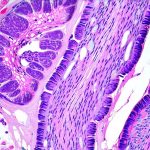Prostate cancer is one of the most common cancers affecting men worldwide, and while many understand its basic premise – uncontrolled growth in the prostate gland – fewer appreciate the intricate relationship between this disease and the body’s hormonal system. It’s not simply a matter of cells gone awry; hormones play a critical role both in the development and progression of many prostate cancers, as well as in how they respond to treatment. Understanding this connection is fundamental to comprehending modern prostate cancer management strategies, from initial diagnosis through long-term care. This article will delve into the complex interplay between prostate cancer and hormones, explaining why hormonal therapies are so frequently used and what implications these treatments have for men facing this diagnosis.
The prostate gland itself relies heavily on androgens, particularly testosterone, to function normally. These hormones stimulate growth, and while essential for healthy prostate tissue, they can also fuel the growth of cancerous cells in many cases. It’s important to note that not all prostate cancers are hormone-sensitive; some have characteristics that make them less reliant on these hormonal signals. However, a large percentage – particularly those diagnosed at later stages – are highly dependent on androgens for their continued proliferation. This dependency creates opportunities for treatment, but also highlights the potential for the cancer to adapt and become resistant to hormonal therapies over time, making ongoing monitoring and adjustments crucial.
Hormone Sensitivity and Prostate Cancer Development
The connection between hormones and prostate cancer isn’t a recent discovery. Researchers have long understood that androgen deprivation therapy (ADT) – treatments aimed at lowering testosterone levels – can significantly slow the growth of many prostate cancers. But why is this the case? The answer lies in the androgen receptor, a protein found inside prostate cells. Androgens bind to these receptors, triggering signals that promote cell growth and division. In cancerous cells, this process is often accelerated and unregulated, leading to tumor expansion.
- The degree of hormone sensitivity varies considerably between individuals and even within different tumors in the same individual.
- Factors like genetic mutations within the cancer cells can influence how strongly they respond to hormonal signals.
- Newer diagnostic tests are emerging that aim to predict a cancer’s likelihood of being hormone-sensitive, allowing for more personalized treatment approaches.
Crucially, it’s not just about high testosterone levels; the availability of androgens is important too. The body naturally produces some testosterone, but other sources contribute as well, including conversion from other hormones through enzymes like 5-alpha reductase. This means that simply blocking testosterone production isn’t always sufficient, and sometimes medications targeting these other pathways are necessary to effectively reduce androgen availability. This complexity explains why different ADT strategies exist – ranging from surgical castration (orchiectomy) to medication – each with its own benefits and drawbacks.
Androgen Deprivation Therapy: Methods and Considerations
Androgen deprivation therapy is a cornerstone of treatment for many men diagnosed with advanced prostate cancer, particularly those where the cancer has spread beyond the prostate gland (metastatic disease). However, it’s not without its challenges. The goal is to reduce androgen levels as much as possible, thereby depriving the cancer cells of the fuel they need to grow. Several methods are used to achieve this:
- Orchiectomy: Surgical removal of the testicles – a permanent and irreversible form of ADT. It’s highly effective but carries surgical risks and alters hormone production permanently.
- LHRH Agonists & Antagonists: Medications that suppress testosterone production by interfering with signals from the pituitary gland. These are often administered as injections or implants. LHRH agonists initially cause a temporary increase in testosterone (tumor flare) before ultimately lowering levels, while antagonists have a more immediate effect.
- Anti-Androgens: Medications that block androgen receptors, preventing testosterone from binding and stimulating cancer cell growth. These are often used in conjunction with LHRH agonists or antagonists to achieve maximal suppression.
It’s vital for patients undergoing ADT to understand the potential side effects. Lowering testosterone can lead to a range of physical and emotional changes, including hot flashes, erectile dysfunction, loss of libido, bone density loss (osteoporosis), muscle mass reduction, fatigue, and even cognitive changes. Managing these side effects is an important part of cancer care, often involving lifestyle modifications, exercise programs, and other medications to mitigate the impact on quality of life. Moreover, long-term ADT can lead to castration resistance, where the cancer cells find alternative ways to grow even in the absence of significant androgen levels – a major challenge in prostate cancer management.
Understanding Castration Resistance
Castration resistance occurs when prostate cancer cells adapt and no longer rely solely on testosterone to fuel their growth. This is a complex process involving multiple mechanisms, including:
- Androgen Receptor Mutations: Changes within the androgen receptor itself can allow it to be activated by other steroids or even grow without being activated at all.
- Alternative Signaling Pathways: Cancer cells may activate different signaling pathways that bypass the need for androgens entirely.
- Increased Androgen Production Within the Tumor: Some tumors begin producing their own androgens, circumventing systemic ADT.
Treating castration-resistant prostate cancer is significantly more challenging. Newer therapies are emerging to target these resistance mechanisms, including drugs that block alternative signaling pathways or disrupt androgen receptor function in different ways. These include second-generation anti-androgens (like enzalutamide and apalutamide) and chemotherapy options. Research continues to explore novel strategies for overcoming this common hurdle in prostate cancer treatment.
The Role of Estrogen and Other Hormones
While testosterone is the primary hormonal focus in prostate cancer, other hormones can also play a role, although their influence is less well-defined. Estrogen, for example, has complex interactions with androgen receptors and may contribute to prostate cancer development or progression in some cases. The balance between estrogen and testosterone within the body is important, and disruptions to this balance could potentially impact cancer risk. Understanding these complexities can help patients explore family history and prostate cancer risk.
Furthermore, hormones like cortisol (a stress hormone) and growth hormone can also influence the immune system and overall health, indirectly affecting cancer behavior. However, these connections are still being actively researched and aren’t currently targeted directly in standard prostate cancer treatments. The interplay between various hormonal systems is incredibly intricate, and understanding how they interact will be crucial for developing more effective and personalized therapies.
Future Directions: Personalized Hormonal Therapy
The future of hormonal therapy in prostate cancer lies in precision medicine – tailoring treatment to the individual characteristics of both the patient and their tumor. This involves several promising areas of research:
- Biomarker Identification: Identifying biomarkers that can predict a cancer’s sensitivity or resistance to ADT, allowing doctors to choose the most appropriate therapy upfront.
- Genomic Profiling: Analyzing the genetic makeup of the tumor to identify specific mutations driving its growth and selecting targeted therapies accordingly.
- Novel Drug Development: Creating new drugs that target alternative signaling pathways or overcome castration resistance more effectively.
Ultimately, the goal is to move beyond a “one-size-fits-all” approach to hormonal therapy and provide men with prostate cancer treatments that are both effective and minimize side effects, leading to improved quality of life and better outcomes. This requires ongoing research, collaboration between scientists and clinicians, and a commitment to personalized care. This can be especially important when considering what risk levels mean in prostate cancer.
As we learn more about how hormones impact the disease, it’s crucial to remember that early detection and management are key. Many men may wonder how long can prostate cancer go undetected?, reinforcing the importance of regular screenings.
The challenge of castration resistance highlights the need for innovative treatments and a deeper understanding of the tumor’s adaptive mechanisms, potentially leading to more effective therapies. Patients may also be interested in learning about if prostate cancer can return after treatment, and what options are available.
Furthermore, advancements in surgical techniques like robotic surgery offer new avenues for localized treatment. Is robotic surgery good for prostate cancer? and the benefits it provides are becoming increasingly recognized.





















